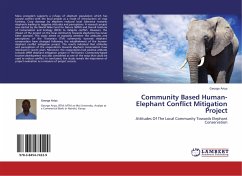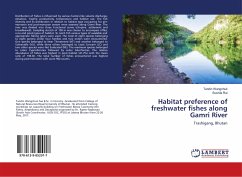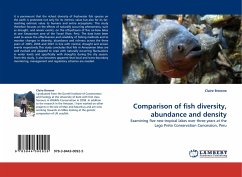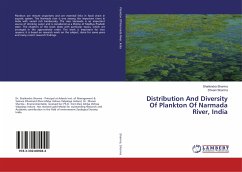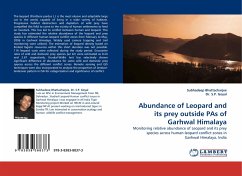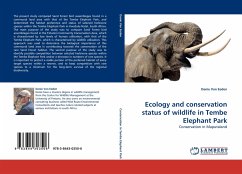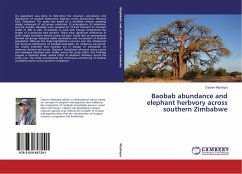
Baobab abundance and elephant herbvory across southern Zimbabwe
Versandkostenfrei!
Versandfertig in 6-10 Tagen
41,99 €
inkl. MwSt.

PAYBACK Punkte
21 °P sammeln!
An assessment was done to determine the structure, abundance and distribution of baobab (Adansonia digitata) across Gonarezhou National Park, Zimbabwe. The study was based on a stratified random sampling design composed of soil group substrates: (i) granophyres, (ii) malvernia, and (iii) rhyolite. Baobabs were sampled on 15 belt transects of constant width of 300 m with 15 baobabs in each belt transect determined the length of a particular belt transect. There were significant differences in plant height and plant density across soil type. Study sites on granophyres derived soil group indicate...
An assessment was done to determine the structure, abundance and distribution of baobab (Adansonia digitata) across Gonarezhou National Park, Zimbabwe. The study was based on a stratified random sampling design composed of soil group substrates: (i) granophyres, (ii) malvernia, and (iii) rhyolite. Baobabs were sampled on 15 belt transects of constant width of 300 m with 15 baobabs in each belt transect determined the length of a particular belt transect. There were significant differences in plant height and plant density across soil type. Study sites on granophyres derived soil group indicated viable abundance and recruitment of baobab population. Whereas the study highlighted a concern over the unbalanced size structure distribution of baobab population on malvernia soil group, our results indicated that baobabs are in danger of extirpation on malvernia derived soil group. Elephant (Loxodonta africana) dung counts and damaged baobabs were similar across the study strata. Our findings suggest a relatively similar spatial effect of elephant herbivory across the study area. The study recommends the continuous monitoring of baobab woodland stands across southern Zimbabwe.




